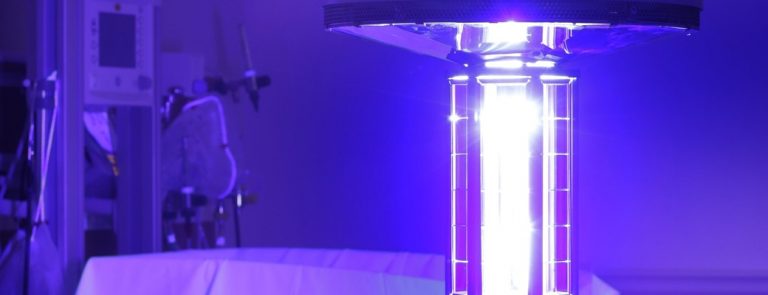As the science of medicine is evolving to find out new cures for the existing diseases, some totally strange and unknown viruses are also creating an atmosphere of panic and chaos. Firstly SARS spread out a shiver, then bird flu rocked the people and now ebola. It is as if humanity has set foot in the direction of meeting its doom. We still have time to curb this, improve our situation on a global level as we have science at our aid. Although there are still innumerable mysteries prevailing for which science could not provide an answer but we have made enough progress to build ourselves tools which will help in saving humanity. This specific tasks combines the knowledge of both biology and mechanics. The aim is to build a robot which will help in curing these deadly diseases.
The latest in line is a germ zapping robot. The specialty of this bot is not in the fact that it can cure a deadly disease causing virus or bacteria but it will stop it from spreading in high risk zones like hospitals and health care centers. Saul is merely 5 feet tall and has been developed by Xenex. Saul uses high intensity pulses of highly energetic ultraviolet rays. These rays splits the cell walls of bacteria and weakens them. It eradicates the threats posed by dangerous pathogens, thus helping in keeping diseases like ebola at bay.
This robot is successfully tested at U.S, Air Force in Virginia and it was found that this spectacular device can kill a RNA strand similar in structure to ebola in about 5 minutes. It also helped in plunging down the infection rates which cause about 45% of deaths during treatment procedure. Airmen were given a demonstration of the robots functions and capabilities from Geri Genant, the Xenex Healthcare Services implementation manager. Though we are all aware of the fact that hospitals and surgery rooms are cleaned with chemicals which kill such bacteria, but still some places remain which house these viruses. Saul will take care of such hidden grounds and make the facility 99% hygienic and clean.
Saul is prepared to fight not only ebola but has been successfully tested to be effective against 22 microorganisms in a study of about 2000 samples all across the globe. This has ensured its performance to be top notch. Xenex has calculated its efficiency to be 99.9%. Now that is too much to be realistic but the company claims it to be. Saul is currently being used for the treatment of soldiers returning from West Africa. Saul is on standby in case one of them begins feeling ill. But there’s a far more practical — and likely — use for the robot. Hospital workers plan to use it on a daily basis to disinfect operating rooms to help prevent common hospital infections. Throughout the coming weeks, the technology will be used as a preventative measure to help eradicate and control viruses.

